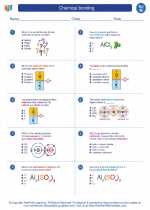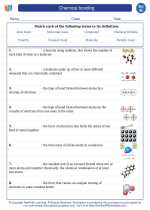Odor
Odor, also known as smell, is a perception that arises from the stimulation of the olfactory (smell) receptors in the nose. It is a vital sense that allows us to detect and recognize a wide range of substances in our environment. The sense of smell is closely linked to our sense of taste and plays a significant role in our overall perception of flavor.
How Do We Smell?
When we inhale, airborne molecules interact with the olfactory receptors located in the nasal cavity. These receptors are specialized nerve cells that can detect and respond to specific odor molecules. When an odor molecule binds to a receptor, it triggers a series of chemical and electrical signals that are transmitted to the brain, where the perception of smell is processed and interpreted.
Types of Odors
Odors can be classified into various categories based on their characteristics. Some common types of odors include:
- Fragrant: Pleasant and sweet-smelling odors, often associated with flowers, fruits, and perfumes.
- Putrid: Foul, offensive odors, typically associated with decaying matter or spoiled food.
- Chemical: Sharp and pungent odors, often associated with cleaning products, solvents, and gases.
- Spicy: Strong, pungent odors associated with spices and certain foods.
The Importance of Odor
Odor serves several important functions in our daily lives, including:
- Food Perception: Smell influences our perception of flavors and helps us distinguish between different types of food and beverages.
- Warning Signs: Foul or unusual odors can alert us to potential dangers, such as spoiled food, gas leaks, or chemical hazards.
- Emotional Responses: Certain odors can evoke strong emotional responses and trigger memories or associations.
- Communication: Animals and humans use odor as a means of communication, such as marking territories or attracting mates.
Studying Odor
Studying odor involves exploring the chemical, biological, and psychological aspects of smell perception. Key areas of study include:
- Olfactory Receptors: Understanding the structure and function of olfactory receptors and their role in detecting odor molecules.
- Chemical Composition: Analyzing the chemical compounds that produce specific odors and how they interact with olfactory receptors.
- Neurobiology of Smell: Investigating the neural pathways and brain regions involved in processing olfactory information.
- Psychophysics: Examining the psychological and perceptual aspects of smell, such as odor discrimination and identification.
Overall, the study of odor encompasses a multidisciplinary approach that integrates biology, chemistry, neuroscience, and psychology to deepen our understanding of this complex sensory experience.
.◂Science Worksheets and Study Guides Eighth Grade. Chemical bonding

 Worksheet/Answer key
Worksheet/Answer key
 Worksheet/Answer key
Worksheet/Answer key
 Worksheet/Answer key
Worksheet/Answer key
 Vocabulary/Answer key
Vocabulary/Answer key
